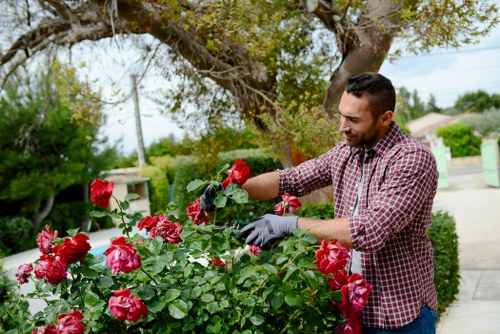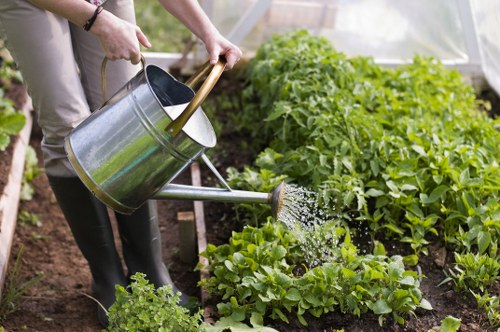Grass Cutting Whitton: Your Comprehensive Guide to a Lush Lawn

Maintaining a well-kept lawn is a source of pride for many homeowners in Whitton. A lush, green yard not only enhances the aesthetic appeal of your property but also provides a welcoming space for relaxation and outdoor activities. Whether you’re a seasoned gardener or a beginner looking to improve your lawn care routine, understanding the essentials of grass cutting in Whitton is crucial.
Grass cutting is more than just a chore; it’s a key component of lawn health and maintenance. Proper mowing techniques can prevent weed growth, promote stronger grass, and improve the overall appearance of your yard. In Whitton, where the climate and soil conditions can vary, having the right knowledge and tools can make a significant difference in achieving the perfect lawn.
In this comprehensive guide, we will explore the best practices for grass cutting in Whitton, the benefits of regular mowing, essential tools and equipment, seasonal considerations, and how to choose the right grass cutting service if you decide to hire a professional. Additionally, we will cover the specific needs of Whitton’s neighborhoods, ensuring that you have all the information necessary to maintain a healthy and beautiful lawn year-round.
The Importance of Regular Grass Cutting

Regular grass cutting is fundamental to lawn health. Consistent mowing helps in controlling weed growth by preventing weeds from establishing themselves. When grass is cut at the right height, it can outcompete weeds for sunlight, nutrients, and water, resulting in a denser and more resilient lawn.
Moreover, proper mowing stimulates the growth of new grass blades, which not only makes the lawn look fuller but also helps in repairing any damaged areas. Mowing also aids in the distribution of grass clippings, which can act as a natural fertilizer, returning essential nutrients to the soil.
In Whitton, where the growing season can vary, adapting your mowing schedule to the changing weather conditions is essential. During peak growth periods in the spring and summer, more frequent mowing may be necessary, whereas in the cooler months, lawn growth slows down, reducing the need for regular cuts.
Best Practices for Grass Cutting

Adhering to the best practices for grass cutting ensures that your lawn remains healthy and attractive. Here are some key guidelines to follow:
- Maintain the Right Mowing Height: Different grass types require different mowing heights. Generally, it’s recommended to cut no more than one-third of the grass blade’s height at a time to avoid stressing the grass.
- Use Sharp Blades: Dull mower blades can tear the grass, making it more susceptible to disease and pests. Regularly sharpen your mower blades for clean cuts.
- Mow When the Grass is Dry: Cutting wet grass can lead to uneven cuts and can clump, making it harder for the lawn to recover.
- Vary Your Mowing Pattern: Changing the direction of your mow each time can prevent the grass from developing a grain and reduce soil compaction.
- Leave Grass Clippings: Grass clippings can provide valuable nutrients back to the soil, acting as a natural fertilizer.
Implementing these practices can significantly improve the health and appearance of your lawn, ensuring it remains a vibrant part of your Whitton home.
Essential Tools and Equipment for Grass Cutting

Having the right tools is vital for effective grass cutting. Here are the essential equipment you’ll need:
- Lawn Mower: Choose between a push mower, electric mower, or a gas-powered mower based on your lawn size and personal preference.
- String Trimmer: For edging and cutting grass in hard-to-reach areas.
- Lawn Edger: To create clean lines along sidewalks, driveways, and flower beds.
- Rake: For removing grass clippings and debris after mowing.
- Sprayer: To apply fertilizer or herbicides as needed.
Investing in high-quality tools can make grass cutting more efficient and less labor-intensive, ultimately contributing to a healthier lawn.
Seasonal Considerations for Grass Cutting in Whitton

Different seasons bring different challenges and requirements for lawn care. Understanding how to adjust your grass cutting routine throughout the year is essential for maintaining a healthy lawn.
Spring
Spring is a crucial time for lawn care. As temperatures rise, grass begins to grow more rapidly. It’s important to start mowing early in the season to keep up with the growth rate.
Summer
During the hot summer months, grass can become stressed due to high temperatures and reduced rainfall. Mowing should be done at a higher height to provide shade to the roots and conserve moisture.
Fall
In the fall, grass growth slows down. This is the time to prepare your lawn for the winter by reducing the mowing frequency and gradually lowering the mower height.
Winter
Grass goes dormant in the winter, and mowing is generally unnecessary. However, it’s important to keep the lawn free of debris to prevent mold and mildew growth.
Choosing Between DIY and Professional Grass Cutting Services
Deciding whether to mow your own lawn or hire a professional service depends on various factors, including time, budget, and lawn size.
### Benefits of DIY Grass Cutting
- Cost-effective: No additional expenses for services.
- Flexibility: Mow on your own schedule.
- Control: Complete control over the mowing process and techniques.
### Benefits of Hiring Professionals
- Expertise: Professionals have the knowledge and experience to maintain your lawn effectively.
- Time-saving: Frees up your schedule for other activities.
- Quality Equipment: Access to commercial-grade tools that deliver superior results.
In Whitton, there are numerous grass cutting services available that cater to different needs and budgets. Evaluating your personal circumstances will help you make the best decision for your lawn care.
Local Relevance: Grass Cutting in Whitton’s Surrounding Areas
Whitton is surrounded by several charming neighborhoods, each with its unique characteristics and grass cutting needs. Here are some of the closest areas to Whitton and what makes their lawn care requirements special:
- Twickenham Just a short drive from Whitton, Twickenham offers spacious lawns and riverside properties that benefit from regular mowing and maintenance.
- Kew Known for its botanical gardens, Kew’s residents often seek environmentally friendly grass cutting solutions to complement their green surroundings.
- Hampton With its mix of historic homes and modern residences, Hampton requires versatile lawn care services that can handle a variety of grass types and garden styles.
- Hounslow As a bustling area, Hounslow residents may prefer professional grass cutting services to save time and maintain clean, tidy lawns.
- Fulwell Fulwell’s scenic parks and residential areas demand meticulous grass cutting to preserve their natural beauty.
- Homerton This vibrant neighborhood benefits from regular lawn maintenance to keep communal areas and private gardens looking their best.
- North Hyde Park: With its family-friendly environment, North Hyde Park focuses on safe and chemical-free grass cutting practices.
- Boston Manor: Boston Manor’s elegant homes require precise grass cutting to maintain their sophisticated appeal.
- Petersham The leafy avenues of Petersham necessitate consistent grass cutting to enhance the area’s picturesque charm.
- Bedfont: Bedfont’s mix of urban and suburban settings benefits from adaptable grass cutting services that can cater to diverse lawn types.
- Hanworth With its community gardens and green spaces, Hanworth emphasizes sustainable grass cutting methods.
- Feltham Feltham’s expansive lawns and diverse residential properties require comprehensive lawn care solutions.
- Whitton Reach: An extension of Whitton, Whitton Reach shares similar grass cutting needs, focusing on both aesthetic and functional lawn maintenance.
- Lower Teddington Lower Teddington’s riverside lawns call for specialized grass cutting techniques to preserve their unique landscape.
- New Brentford New Brentford’s dynamic housing developments seek efficient grass cutting services to keep up with the growing demand.
Eco-Friendly Grass Cutting Practices
Adopting eco-friendly grass cutting practices not only benefits the environment but also promotes a healthier lawn. Here are some sustainable methods to consider:
- Mow Less Frequently: Allowing the grass to grow slightly longer can improve its root system and reduce the need for frequent mowing.
- Use Electric Mowers: Electric mowers produce fewer emissions compared to gas-powered ones, making them a greener choice.
- Leave Grass Clippings: Incorporating grass clippings back into the lawn can provide natural fertilizers, reducing the need for chemical inputs.
- Water Efficiently: Water your lawn during early mornings or late evenings to minimize evaporation and ensure the grass receives adequate moisture.
- Choose Native Grass Types: Native grasses are better adapted to the local climate and soil conditions, requiring less maintenance and water.
Implementing these practices in Whitton can lead to a more sustainable and resilient lawn, contributing to the overall health of the local ecosystem.
Common Grass Cutting Challenges in Whitton
Maintaining a pristine lawn in Whitton can present several challenges. Understanding these common issues and how to address them is key to successful grass cutting:
Weed Invasion
Weeds can quickly take over a lawn if not managed properly. Regular mowing at the correct height, combined with proper fertilization, can help suppress weed growth.
Pest Control
Pests such as grubs and insects can damage grass roots and blades. Implementing integrated pest management strategies can keep these threats at bay.
Soil Health
Healthy soil is the foundation of a vibrant lawn. Regular aeration, fertilization, and soil testing can ensure that your grass receives the necessary nutrients.
Weather Extremes
Whitton experiences a range of weather conditions that can stress grass. Adapting your mowing schedule and lawn care practices to the seasons can mitigate these effects.
Equipment Maintenance
Proper maintenance of your mowing equipment is essential for effective grass cutting. Regularly sharpening blades and servicing your mower can prevent issues and improve performance.
Advanced Grass Cutting Techniques
For those looking to take their lawn care to the next level, advanced grass cutting techniques can offer improved results and lawn health:
Scalping
Scalping involves cutting the grass very short and is generally discouraged as it can stress the grass and make it more susceptible to weeds and disease.
Dethatching
Dethatching removes the layer of dead grass and organic material that can build up on the lawn surface. This promotes better air and water penetration to the roots.
Lawn Aeration
Aeration involves perforating the soil to allow air, water, and nutrients to reach the grassroots more effectively. It is especially beneficial for lawns with compacted soil.
Top Dressing
Top dressing involves applying a thin layer of compost or soil over the lawn. This can improve soil structure, add nutrients, and enhance the overall appearance of the grass.
String Trimming and Edging
Precision in grass cutting extends beyond mowing. String trimming and edging provide clean lines and prevent grass from encroaching into unwanted areas.
Choosing the Right Grass Variety for Whitton
Selecting the appropriate grass variety is crucial for achieving a healthy and resilient lawn. In Whitton, the climate and soil conditions can support various grass types, each with its own benefits:
- Fescue: Known for its tolerance to shade and drought, fescue is a popular choice for lawns in Whitton.
- Bermuda Grass: Ideal for sunny areas, Bermuda grass is durable and recovers quickly from wear and tear.
- Kentucky Bluegrass: Offering a rich green color and fine texture, Kentucky Bluegrass is a favorite for high-maintenance lawns.
- Zoysia Grass: This grass type is slow-growing and low-maintenance, making it suitable for busy homeowners.
- Ryegrass: Ryegrass provides quick establishment and is often used for overseeding to maintain green coverage during cooler months.
Consulting with a local lawn care expert can help you determine the best grass variety for your specific lawn conditions in Whitton.
Maintaining Lawn Health Through Proper Nutrition
Feeding your lawn the right nutrients is essential for robust growth and resilience. Here are some key aspects of lawn nutrition:
Fertilization
Applying the appropriate fertilizer at the right times can significantly enhance your lawn’s health. Choose fertilizers that match your grass type and soil nutrient levels.
Soil Testing
Regular soil testing helps identify nutrient deficiencies and pH imbalances. Correcting these issues ensures that your grass can absorb nutrients effectively.
Organic Matter
Incorporating organic matter such as compost into your lawn can improve soil structure, water retention, and nutrient availability.
pH Levels
Maintaining a balanced pH is vital for nutrient uptake. Most grasses thrive in slightly acidic to neutral soil conditions.
Controlled Feeding
Over-fertilizing can lead to excessive growth and increased susceptibility to pests and diseases. Follow recommended application rates to avoid nutrient runoff and environmental impact.
Watering Strategies for a Healthy Lawn
Proper watering is a cornerstone of lawn care. Here are effective watering strategies to keep your Whitton lawn healthy:
Deep and Infrequent Watering
Watering deeply but infrequently encourages deeper root growth, making the grass more drought-resistant.
Early Morning Irrigation
Watering in the early morning reduces evaporation losses and allows the grass blades to dry before evening, minimizing the risk of disease.
Consistent Moisture
Maintaining consistent soil moisture is important. Avoid letting the soil dry out completely between waterings.
Efficient Irrigation Systems
Installing an efficient irrigation system, such as drip irrigation or smart sprinklers, can optimize water usage and ensure even coverage.
Adjusting for Weather Conditions
Adapt your watering schedule based on seasonal changes and rainfall patterns to prevent overwatering or underwatering.
Dealing with Common Lawn Diseases
Lawn diseases can significantly impact the health and appearance of your grass. Being proactive in identifying and managing these diseases is essential:
Fungal Infections
Fungal diseases like brown patch and powdery mildew can cause unsightly patches and weaken the grass. Proper mowing, watering, and aeration can help prevent these issues.
Bacterial Diseases
Bacterial infections often result from excessive moisture and poor air circulation. Ensuring your lawn is well-drained and not overwatered can reduce the risk.
Rust
Rust appears as orange or reddish pustules on grass blades. Applying appropriate fungicides and improving lawn hygiene can manage rust outbreaks.
Preventive Measures
Maintaining overall lawn health through proper nutrition, watering, and mowing practices is the best defense against diseases.
Consulting Professionals
If you suspect a serious disease outbreak, consulting a lawn care professional in Whitton can provide targeted treatments and solutions.
Integrating Landscaping with Lawn Care
Integrating landscaping elements with your lawn care routine can create a harmonious and aesthetically pleasing outdoor space:
- Plant Selection: Choose plants that complement your grass type and thrive in Whitton’s climate.
- Hardscaping: Incorporate pathways, patios, and garden borders to define spaces and reduce mowing areas.
- Mulching: Use mulch in flower beds to retain moisture, suppress weeds, and enhance soil quality.
- Ornamental Features: Add features like fountains, statues, or garden furniture to personalize your outdoor area.
- Seasonal Planting: Plant seasonal flowers and shrubs to maintain color and interest throughout the year.
A well-integrated landscape not only reduces the maintenance burden but also elevates the overall appeal of your Whitton property.
Conclusion
Grass cutting in Whitton is an essential aspect of home maintenance that goes beyond aesthetics. By following best practices, using the right tools, and adapting to seasonal changes, you can achieve a healthy and beautiful lawn that enhances your property’s value and provides a comfortable outdoor space.
Whether you decide to tackle lawn care yourself or hire a professional service, understanding the fundamentals of grass cutting will ensure your efforts are effective and rewarding. Embrace sustainable practices, stay informed about local conditions, and enjoy the benefits of a well-manicured lawn in the heart of Whitton.
Frequently Asked Questions
- How often should I mow my lawn in Whitton?
You should mow your lawn about once a week during the growing season (spring and summer). However, the frequency can vary depending on grass growth rate and weather conditions.
- What is the best mowing height for my grass type?
The ideal mowing height varies by grass type. For example, fescue should be kept around 3-4 inches, while Bermuda grass can be maintained at 1-2 inches. Consult with a local lawn care expert for specific recommendations.
- When is the best time of day to mow my lawn?
The best time to mow your lawn is in the late morning after the dew has dried but before the heat of the day. This helps prevent the grass from getting damaged and reduces stress on the plants.
- Should I leave grass clippings on my lawn?
Yes, leaving grass clippings can provide natural nutrients back to the soil, acting as a mulch that helps retain moisture and suppress weeds. Just ensure the clippings are not too thick to avoid matting.
- How can I prevent my grass from becoming too thick?
To prevent excessive thatch buildup, aerate your lawn regularly, mow at the correct height, and avoid over-fertilizing. Proper maintenance practices will keep your grass at a healthy density.

